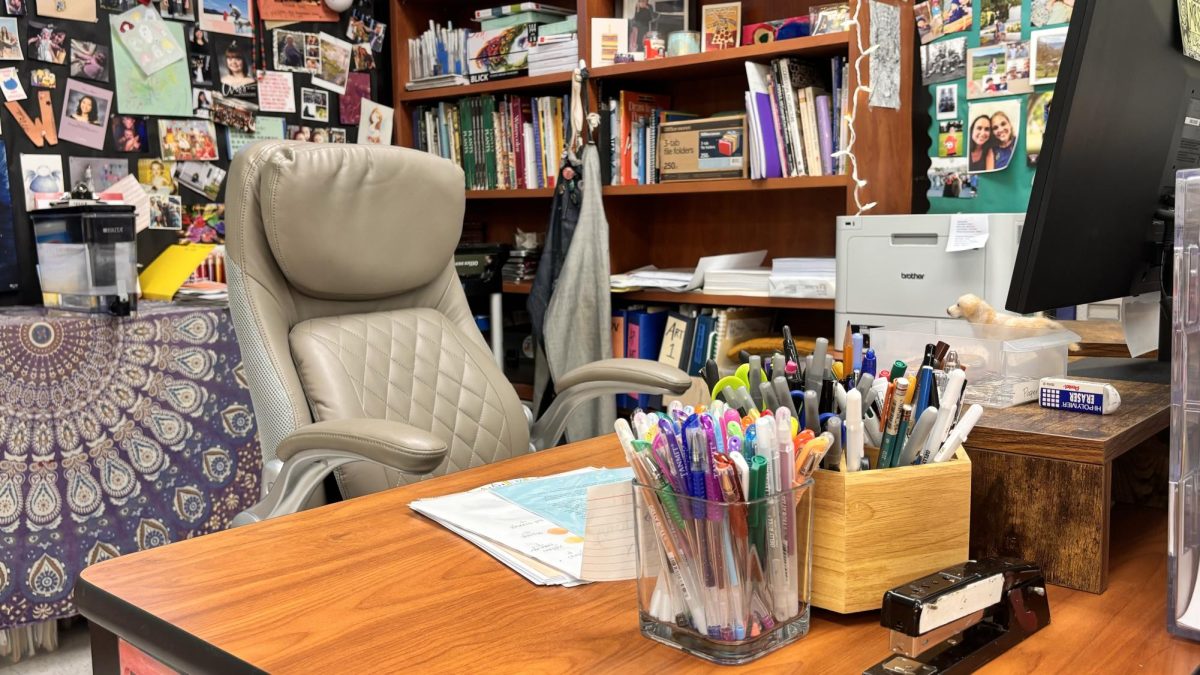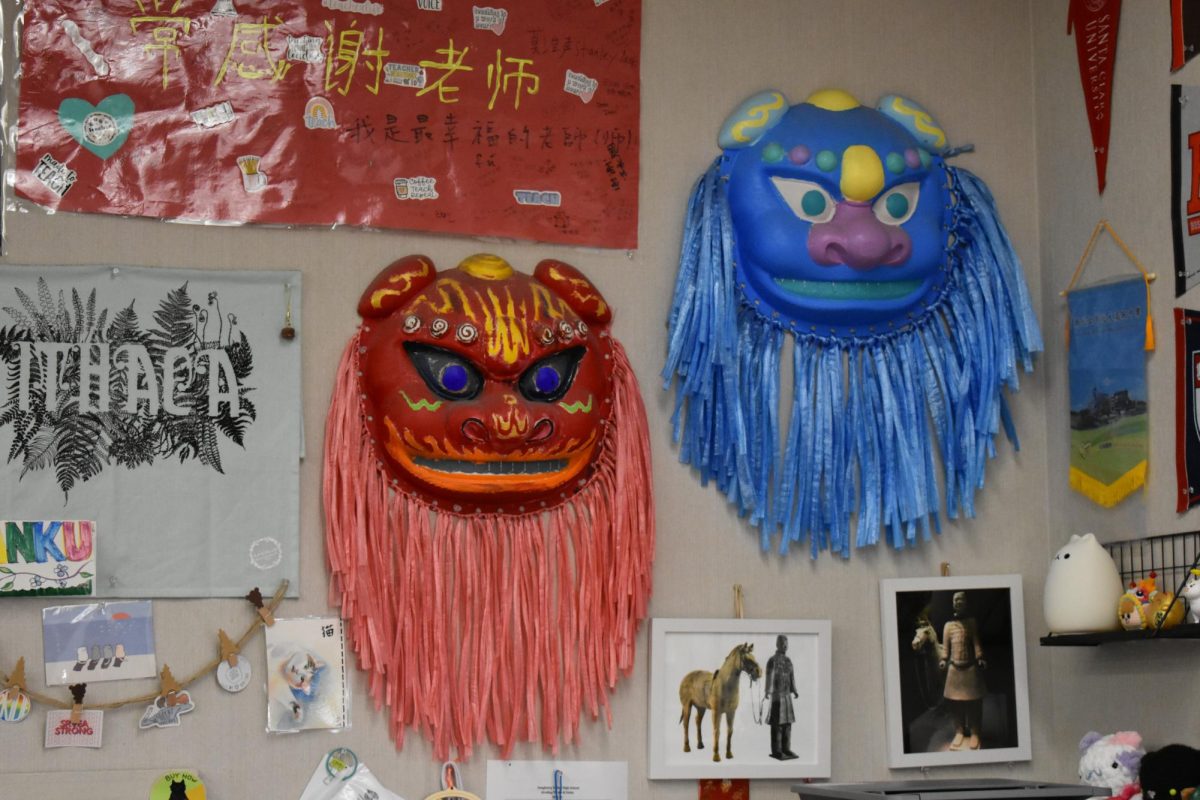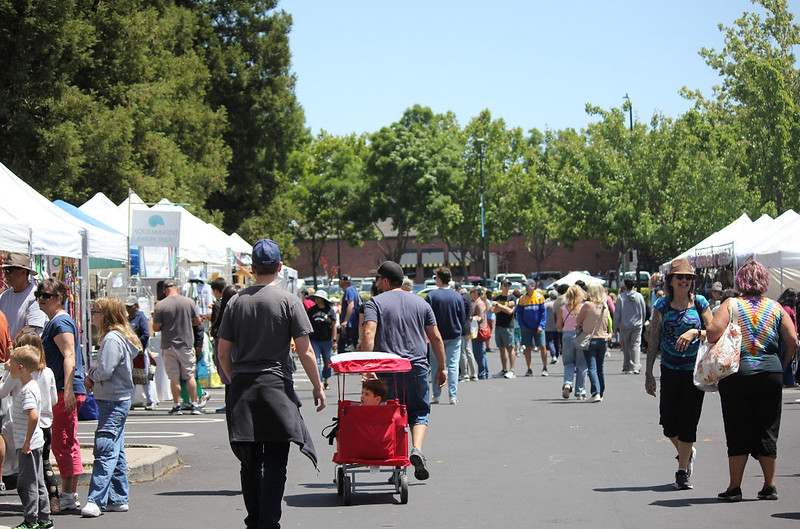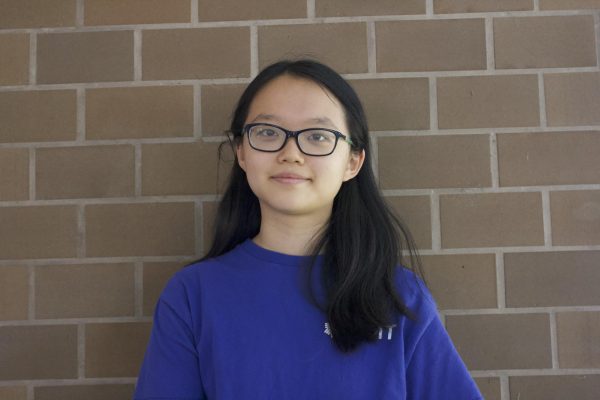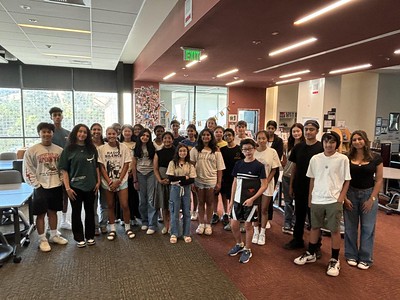
In the 2024-25 school year, SRVUSD’s Student Senate hopes to improve outreach and visibility and set high expectations for more targeted goals to better represent and connect with students.
The Student Senate, first established in 2020, is a governing body composed of one representative from each of the seventh and eighth grades of each middle school and each of the 10th, 11th, and 12th grades of each high school in the district. It is currently led by Student Chair Selma Bahrani, a DVHS junior, and convenes on the second Monday of every month. The DVHS representatives are sophomore Sharanya Roy, junior Ishaan Savla, and senior Adhya Akki. The Student Senate works closely with Jon Campopiano, SRVUSD’s Executive Director of Secondary Education; Tami Castelluccio, the Administrative Secretary for Educational Services; and Dr. Hong Nguyen, the Director of Educational Equity.
The Student Senate’s overarching goal is to bring student concerns to the district level. One purpose of the monthly Senate meetings, which usually occur the day before district board meetings, is to discuss the topics to be considered during the board meeting and give suggestions to Student Board Member Travis Hodges, a MVHS senior, who casts a preferential vote at board meetings on the behalf of students. Another is to give feedback to guest speakers, such as SRVUSD’s head chef, who Bahrani and district administrators bring to Senate meetings. However, the Senate has additional objectives in mind this year.
“One of the big things that in the last couple of years we’ve noticed is that we want to improve on having the students at each school site know who their Student Senate members are,” Dr. Nguyen emphasized, “and really trying to highlight all of our Student Senate members at each one of the schools so students know ‘this is who I need to reach out to if I want to provide some feedback.’”
Dr. Nguyen, Bahrani, Savla and Akki agreed that one of the Student Senate’s most important goals this year is increasing knowledge of the Student Senate and Senators’ ideas at schools. Bahrani and Savla noted that the Student Senate will work with their respective Leadership classes to promote Senate and district activities—such as the Run for Education, an important fundraiser for SRVUSD—on social media. Akki supplemented that the Student Senate is also working towards creating its own social media accounts and revamping its old website; spreading the word to DVHS families through the Friday newsletters sent by Principal Falkner; and promoting itself on platforms all students use, such as Google Classroom and Infinite Campus.
Dr. Nguyen added that Senators would be talking to their respective administrators about how to promote themselves at school, and said that Senators were encouraged to hold spaces for students to reach out to them.
“One of the ways we can start getting students to voice our concerns is educating students about who we are and what our goals are,” Savla suggested. “Maybe this entails ‘Trustee Hours’ where we are open to answering questions from students who can just come up and ask us questions. It could be in person during lunch where we have a table and publicize the Senate, or [an] online [meeting] every week or two weeks.”
Savla mentioned that the Student Senate had sent out feedback forms and surveys in the past to understand student opinions and concerns, but pointed out that there is only so much that can be done with surveys, as opposed to more personal, face-to-face communication, which would allow Senators both to improve their visibility as well as to hear from students in an informal setting.
This year, the Student Senate is also implementing clearer expectations and rules about Senators’ responsibilities and their projects in hopes of Student Senators being able to better understand concerns at their schools and target goals to fit their schools.
“I implemented a requirement that each Senator is required to attend one Site Council Meeting,” Bahrani explained. “The whole point of having a Student Senator attend at least one of these meetings per semester is so they can understand what is happening at their school and how they can contribute to what is happening at their school and possibly get better ideas from what is happening at other schools.”
The Site Council at each SRVUSD secondary school is composed of students, parents, and staff, and is more focused on their specific school’s issues, in contrast with the Student Senate’s representation of concerns across the district.
In regards to Senators’ projects, these are usually carried out by subcommittees within the Student Senate each semester. There are currently three subcommittees, the favorites from voting done at the first Student Senate meeting on Aug. 19, 2024: Social Equity, Mental Health and Student Voice. In the past, subcommittees have worked on projects such as writing a resolution concerning Arab-American Heritage Month that was brought to the district’s Executive Cabinet and Educational Services team and attending meetings regarding the curriculum of the new Ethnic Studies class.
Akki, a returning Senator, commented that the completion of some projects was not well-enforced in the past year, but noted that the new leadership—Bahrani and Hodges—were passionate about changing that. Savla brought up Bahrani’s emphasis on doing more focused, interactive subcommittee projects this year as well, and advocated for panels targeted towards specific topics, such as district nutrition policies and school lunches, instead of broad ones. Savla also expressed his hope that projects would be more personalized by building upon structures already in place at schools.
“One of the ways we’re definitely going to work to see our goals come into fruition is implementing more targeted goals on our campuses, because when we have topics like mental health awareness, we often ignore the work that’s been done by wellness representatives at our respective schools,” Savla said. “I think working cooperatively to expand their influence on the platform they’ve already set up works really well.”
He further explained that DVHS Student Senators will be building good relationships with staff members such as Principal Lauren Falkner, wellness counselors and others who can provide insight on student struggles. According to Akki, talking to DVHS administrators will also help Student Senators understand the perspective of teachers and staff when working towards resolving student issues, including limits to what teachers are able to do.
At the end of the day, Bahrani really hopes that all their efforts moving forward will lead to the Student Senate more accurately representing and communicating with the student body.
“I just want to increase student engagement in the Student Senate so we can really be adhering to the needs of the student body and not just working as an individual entity,” she said.


